ILTS Insights – Basics of Liver Machine Perfusion

Webinar:
ILTS Insights: Basics of Liver Machine Perfusion
Given the current landscape in liver transplantation, with a shift from younger donors to more older, obese, and DCD donors as the sources for human grafts, dynamic organ perfusion preservation strategies have become a priority in this field. In this first Bridge to Life supported Webinar, experts will discuss the basic science behind the different strategies for liver perfusion preservation and how these strategies may be used to recover, evaluate, and even improve the quality of livers for transplantation.
Objectives: Understand the basic necessities for both hypothermic and normothermic machine perfusion and the potential benefits and pitfalls associated with each modality, including how each may be used to assess liver viability prior to transplantation.
Agenda:
- Overview on Mechanism of Action and Effects of Hypothermic (Oxygenated) Liver Perfusion (James V. Guarrera)
- Overview on Mechanism of Action and Effects of Normothermic Perfusion in Liver Transplantation (Peter Friend)
- Liver Viability Assessment during Machine Perfusion (Andrea Schlegel)
- Panel Discussion
Speakers:
 |
James V. Guarrera is a Professor of Surgery and Chief for the Division of Liver Transplantation and Hepatobiliary Surgery at Rutgers, New Jersey Medical School. Dr. Guarrera is acknowledged as an international expert and pioneer in Ex-vivo Machine Preservation of donor organs. He is distinguished as the first to clinically preserve human livers using ex-vivo continuous machine perfusion. The techniques he developed paved the way for ex-vivo liver machine perfusion procedures now being implemented in clinical trials by other groups in North America, Europe, and Asia. |
 |
Peter Friend is a Professor of Transplantation and Consultant Transplant and HPB Surgeon at the Director Oxford Transplant Centre. His experimental interest is in the application of isolated perfusion of the liver to a number of therapeutic areas. In particular, perfusion of the liver with oxygenated blood at normal body temperature can allow recovery from damage, extended preservation for transplantation and organ specific delivery of therapy. |
 |
Dr. Andrea Schlegel is a certified transplant and HPB surgeon, currently working at the Careggi University Hospital in Florence, Italy. Since more than 10 years, her research focus on underlying mechanisms of ischemia/reperfusion injury and protective effects of novel machine perfusion technology. One of Andrea`s main interests is the development of new markers to predict organ viability during machine perfusion, to enable the safe use of high-risk donor livers, as frequently seen in Switzerland, the United Kingdom and Italy, where she worked recently. |
Moderator:
 |
Marit Kalisvaart, MD, PhD is a surgical trainee from the Netherlands. Currently, she works as a general surgery resident and researcher in HPB surgery and liver transplantation at the Department of Surgery and Organ Transplantation at the University Hospital in Zurich, Switzerland. Marit Kalisvaart is a member of the ILTS Vanguard Committee and topic coordinator of the ILTS DCD & Machine Perfusion Special Interest Group. |
This webinar is supported by: Bridge to Life
ILTS would like to thank Bridge to Life for their generous support for the production of this webinar. Bridge to Life has had no influence on the content and full editorial control remains the sole responsibility of ILTS.






